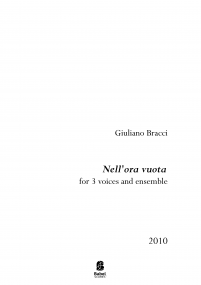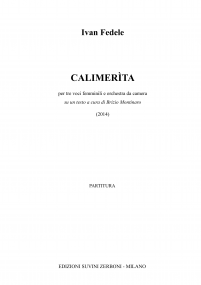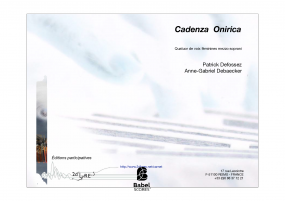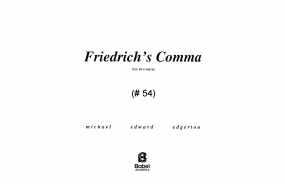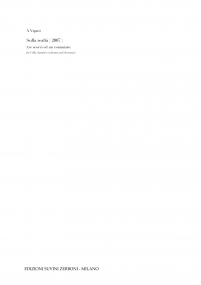Missa Lumen de Lumine
For Three female voices
15,00 €
Digital version (+0,00 €) instant download
Printed format (+14,80 € printing and shipping). Colissimo7-14 days aprox.
When you buy a score, you can contact the composer right here!
Specifications
Region
Europe
Estimated Duration
26 - 30min
Date
2002
ISMN : 979-0-2325-1627-1
In Stock
Videos on this piece
Notes on this piece
Add to a playlist
- Login to create your own lists
Trio Mediaeval’s sound world is fully authentic for Sungji Hong’s Mass Lumen de Lumine, written for the Trio. Lumen de Lumine creates exquisite sonorities by exploring different vocal tessituras and textures. The opening Kyrie is canonic and highly embellished, seeming to take its departure in texture and musical technique – if not musical style – from the many late mediaeval settings of the Mass Ordinary, where the shorter texts (Kyrie, Sanctus, Agnus Dei) are treated much more melismatically than the longer texts. Hong’s Kyrie is imitative, beginning with a low tessitura that expands upwards to create a wide expanse of sound. It is mainly polyphonic – the texture operates in a linear way rather than in blocks of sound - but the voices come together homophonically in each of the three sections for the last syllables. Rhythmically, the “Lombard” or scotch-snap figure that characterizes this movement seems to link it back to the “ars subtilior” of the late fourteenth century, when composers revelled in exploring the new possibilities opened up by ever-more sophisticated notations; but we might also hear this intricacy as a reference to the rhythmic inflexions that we instinctively feel must once have been present but are now lost in our rather literal, present-day realizations of plainchant.
In the Gloria, the melodic lines are more chromatically inflected and the rhythms more subtly nuanced; the declamatory style at the opening soon becomes punctuated by enormous changes of tessitura and texture. These complex passages are set off (sometimes interrupted by) homophony in various tempi and moods. The opening is jubilant; the music seems to be moving forward to a glorious point in a three-octave passage at “omnipotens (almighty)”. Here, Sungji Hong sets a major 9th in a dramatic style to create a sense of open space, underlying the words “Tu solus Altissimus”. Emphasis is also created near the end of the Gloria, when the words “Jesu Christe’” are sung by a solo voice.
The Credo is primarily contrapuntal and unfolds quickly by introducing different parts of the text in each voice imitatively, recalling the 15th-century practice of “simultaneous” presentation of texts – useful in an age where intricate polyphonic writing was slowing down the singing of the Mass almost to a standstill. The “Et incarnates” section forms a striking contrast to the “Allegretto risoluto” opening and is set entirely as a very severe and slow solo.
In the Sanctus, subtle word painting at “Pleni sunt caeli et terra” stands out to the listener. Here, the space between heaven and earth is depicted by the two of the three voices singing at the limits of their ranges. The Agnus Dei is in simple, rather static homophony that echoes the Gloria’s “Qui tollis peccata mundi, miserere nobis”: the voices are marked “bell-like” and sing in open-sounding harmonies. Although the texture occasionally opens out into imitation, the main impression is of space and a contemplative stillness.
Hong’s music, complex and subtle, always remains accessible – partly because the ever-changing textures direct listeners so effectively towards what she really wants us to hear, and partly because she is constantly exploring different colours, images and timbres. She seems to have absorbed sound worlds not only from her native Korea but from her exploration in electroacoustic music with its special focus on timbre.
Nicky Losseff
Instrumentation
Female voice (unspecified) (3)
Score Details
Format - A4 / US Letter
Pages - 40
Pages - 40
Recording
Trio Mediaeval



